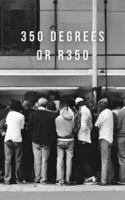In an intriguing twist of fate, the question of “350ºF or R350” slices through two vastly different worlds – the kitchen and the economic reality of young South Africans. On the one hand, the culinary advice from a 2015 article, “What’s so special about 350 degrees Fahrenheit (350ºF)?” reveals that while baking at 350ºF is a catch-all for many recipes, it isn’t always the optimal choice. This notion of finding the perfect temperature parallels the heated debate around the adequacy of the R350 Social Relief Distress Grant in supporting the unemployed or financially distressed in South Africa.
At a time when youth unemployment for those aged 15 to 24 peaks at a staggering 59.4%, the significance of the R350 grant becomes a pressing matter. I sought the perspective of a 23-year-old on this grant, aiming to peel back the layers of its impact.
The Stark Reality of Youth Unemployment
With youth unemployment alarmingly high at 59.4% in late 2023 and starkly contrasted by a 7.3% rate in the USA as of January 2024, the divide between developed and developing nations is glaring. The recent census further highlights a disturbing trend: life expectancy and quality of life vastly differ across South Africa’s demographic spectrum, underscoring the chasm between the privileged and economically oppressed communities. This divide is not only reflected in life expectancy but also in the accessibility to opportunities and safety, with some communities plagued by gun violence affecting youths as young as 14.
R350 Grant: A Closer Look Through Caleb’s Eyes
In the heart of Johannesburg, I met Caleb, a 23-year-old from Coronationville who currently works as a lifesaver and soccer coach. His insights into the R350 grant shed light on its real-world impact on South Africa’s youth.
“What do you think the R350 unemployment grant is for?” I asked. Caleb responded, “I think it’s there to ‘help’ the unemployed youth get by.” This perspective underscores the grant’s role as a stopgap measure rather than a long-term solution.
“If you received the R350 grant, what would you use it for?” Caleb’s answer was pragmatic, highlighting the limitations of the grant’s amount. “Seeing that you can barely do anything with R350 nowadays, I would probably spend it on public transport to get from point A to point B.” This points to the basic necessity of mobility, even when resources are scarce.
“What are your ambitions in life, and do you think that the R350 grant will assist you in reaching them?” Caleb’s ambitions reveal a deep-seated desire for generational financial security and personal success. “To make sure everybody in my family is financially secure for generations and to be at the top. To be honest, not even close.” His response underscores the gap between the grant’s utility and the aspirations of South Africa’s youth.
“Do you know someone who receives the R350 grant? If yes, what do they use it for?” Caleb does know recipients, noting, “They mainly use it for groceries—the little they can get.” This highlights the grant’s role in covering basic living expenses.
“Can you study something using the R350 grant?” and “Can you start a business using the R350 grant?” Caleb’s scepticism is evident. “I don’t think you can study something with R350; if so, it’s probably a very low qualification.” And regarding entrepreneurship, “To my understanding, you need a lot more capital to start a business.”
“If you could change the amount to a different amount, what amount would you need to survive? Will it be more?” Caleb believes a more realistic figure would be significantly higher. “Yes, it would definitely be at least around R750 or R850; that’s more reasonable.”
The Future of the R350 Grant
The government’s announcement of an increase to R370 from April 2024 provides a slight, but perhaps insufficient, uplift. Caleb’s insights paint a vivid picture of the challenges and decisions faced by young South Africans navigating economic hardship.
Innovation and resilience emerge as themes among those trying to stretch the grant further or leverage it into something bigger. Yet, Caleb’s reflections reveal a pervasive sense of the grant’s inadequacy in truly addressing the needs of economically oppressed communities, emphasising the urgent need for more comprehensive support systems and opportunities for South Africa’s youth.
The Struggle and Spark of Innovation
Can you kickstart a venture with just the R350 SRD Grant? On its own, R350 might not seem like enough to launch a business. However, with a bit of support from your family for the basics, like a roof over your head or daily meals, it’s not completely out of the question.
Believe it or not, some have already turned this modest sum into the foundation of their own businesses. Take, for example, an ice cream shop that sprang up in Soweto, Johannesburg, all thanks to the R350 SRD Grant.
For a dose of motivation to get your entrepreneurial gears turning, check out this YouTube video. It features Thando Makhubu, the owner of Soweto Creamery, who launched his ice cream business with just an R350 grant.
Thinking of something simpler? Why not pool together R350 with a mate you trust and dive into urban farming? With R700 to start, you could be on your way to supplying fresh veggies to your community, making a difference right where you are.
The discussion around the R350 grant unveils the broader challenges and inequalities faced by South Africa’s youth. While the grant serves as a crucial lifeline for some, the systemic disparities and the divide between the privileged and the oppressed remain profound. Through resilience, creativity, and community support, however, there lies the potential for small grants to seed greater opportunities.
Tell us: How could you creatively use the Social Relief Distress Grant to make a positive impact in your community or kickstart your entrepreneurial journey?


